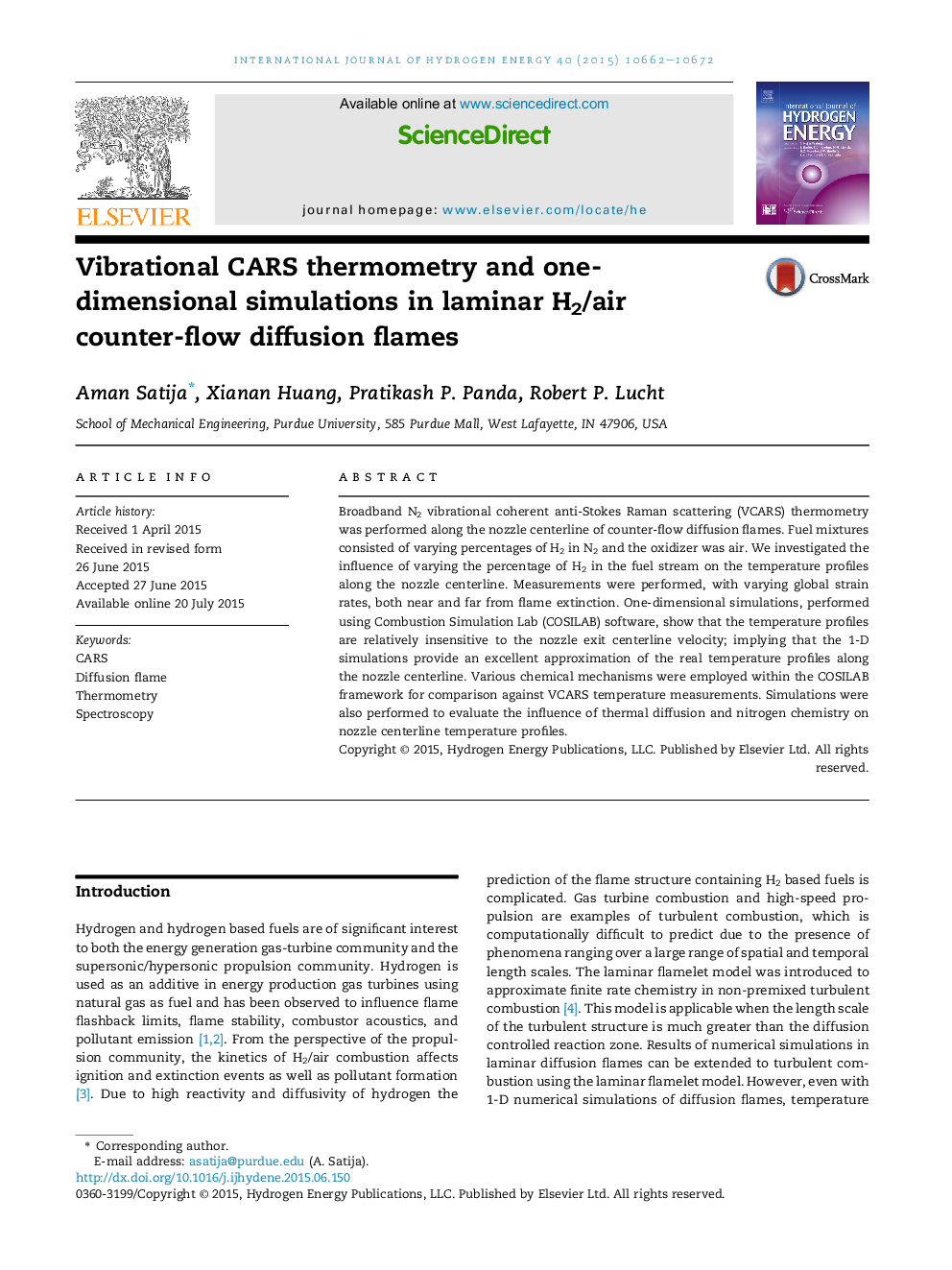| Article ID | Journal | Published Year | Pages | File Type |
|---|---|---|---|---|
| 1279117 | International Journal of Hydrogen Energy | 2015 | 11 Pages |
•VCARS thermometry and 1-D COSILAB simulations performed in H2/air CFDFs.•Global strain-rate has little influence on nozzle centerline temperature profiles.•Simulations using GRI 3.0 mechanism compare closest with VCARS measurements.•Simulations and VCARS measurements show different trends near flame extinction.•With no thermal diffusion calculated peak temperatures lower than measurements.
Broadband N2 vibrational coherent anti-Stokes Raman scattering (VCARS) thermometry was performed along the nozzle centerline of counter-flow diffusion flames. Fuel mixtures consisted of varying percentages of H2 in N2 and the oxidizer was air. We investigated the influence of varying the percentage of H2 in the fuel stream on the temperature profiles along the nozzle centerline. Measurements were performed, with varying global strain rates, both near and far from flame extinction. One-dimensional simulations, performed using Combustion Simulation Lab (COSILAB) software, show that the temperature profiles are relatively insensitive to the nozzle exit centerline velocity; implying that the 1-D simulations provide an excellent approximation of the real temperature profiles along the nozzle centerline. Various chemical mechanisms were employed within the COSILAB framework for comparison against VCARS temperature measurements. Simulations were also performed to evaluate the influence of thermal diffusion and nitrogen chemistry on nozzle centerline temperature profiles.
